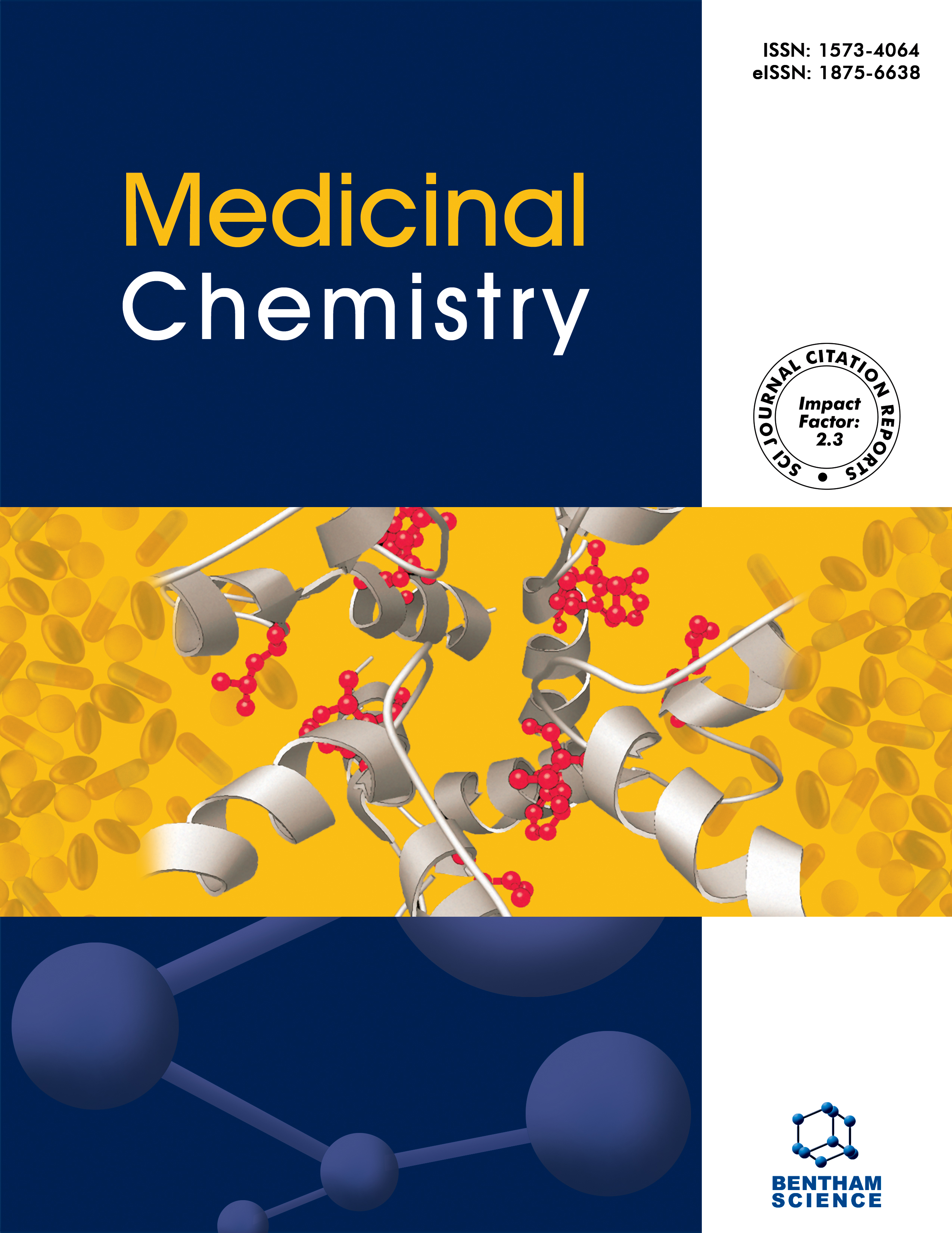- Home
- A-Z Publications
- Medicinal Chemistry
- Previous Issues
- Volume 18, Issue 9, 2022
Medicinal Chemistry - Volume 18, Issue 9, 2022
Volume 18, Issue 9, 2022
-
-
Bioisosterism in Drug Discovery and Development - An Overview
More LessAuthors: B.S. Jayashree, P. S. Nikhil and Soumyajeet PaulBioisosterism is a unique approach used by medicinal chemists for the reasonable modification of lead compounds into safer, more clinically effective, economical, and therapeutically attractive drugs. It is one of the most crucial lead modification tools, widely applied in the field of rational drug design to amplify the desired activity and eliminate undesirable properties, thus facilitating the optimization of pharmacokinetic pro Read More
-
-
-
New Route to the Synthesis of Novel Pyrazolo[1,5-a]pyrimidines and Evaluation of their Antimicrobial Activity as RNA Polymerase Inhibitors
More LessAuthors: Amira E. M. Abdallah and Galal H. ElgemeieAims: The current study aimed to synthesize novel pyrazolo[1,5-a]pyrimidines based on 5- aminopyrazoles 3, evaluate their antimicrobial activity, and study the minimum inhibitory concentration (MIC) for the most active compounds. In addition, molecular docking studies and RNA polymerase inhibitory activity were determined. Background: Starting with our previously reported 5-aminopyrazoles 3, a number of novel pyrazolo[ Read More
-
-
-
Synthesis and In vitro Evaluation of Hydrazonomethyl-Quinolin–8–ol and Pyrazol–3–yl-Quinolin–8–ol Derivatives for Antimicrobial and Antimalarial Potential
More LessAuthors: Sanjay Kumar, Purvi Shah, Siddharth K. Tripathi, Shabana I. Khan and Inder P. SinghBackground: Quinoline is a well-established nucleus displaying various biological activities. Quinolin-8-ol-containing compounds are reported for antimicrobial as well as antimalarial activity. Hydrazone- and pyrazole-containing compounds are also reported for antimicrobial activity. In this work, we have synthesized hydrazonomethyl-quinolin–8–ol and pyrazol–3–yl-quinolin–8–ol derivatives retaining quinolin-8-ol along with hy Read More
-
-
-
Drug Resistance in the HIV-1 Subtype C Protease Enzyme: A High Throughput Virtual Screening Approach in Search of New Ligands with Activity
More LessAuthors: Arthur Sarron and Kevin A. LobbBackground: HIV-1 subtype C protease is a strategic target for antiretroviral treatment. However, resistance to protease inhibitors appears after months of treatment. Chromones and 2- biscoumarin derivatives show potential for inhibition of the HIV- subtype C protease. Objective: Different heterocyclic structures from the ZINC database were docked against Human Immunodeficiency Virus-1 (HIV) subtype C protease crystal Read More
-
-
-
Synthesis, Assessment of Antineoplastic Activity, and Molecular Docking of Novel 2-Thioxo-oxazolidin-4-one Derivatives
More LessBackground: Oxazolidinones display several biological effects, including anticancer activity. The purpose of this present work was to investigate a series of novel oxazolidinone derivatives with potential antineoplastic activity. Their mechanisms of death induction and effects in the cell cycle were also evaluated. A molecular docking study was accomplished through proteins of the Cyclin-Dependent Kinases family (CDK). The Read More
-
-
-
Structure-Based Virtual Screening to Identify Negative Allosteric Modulators of NMDA
More LessAuthors: Zaid A. Sherwani, Ruqaiya Khalil, Mohammad Nur-e-Alam, Sarfaraz Ahmed and Zaheer Ul-HaqBackground: NMDA (N-methyl-D-aspartate) receptor is one of the ionotropic receptor subtypes of glutamate, the most abundant excitatory neurotransmitter in the human brain. Besides physiological roles in learning and memory, neuronal plasticity and somatosensory function NMDAR overstimulation are also implicated in a pathophysiological mechanism of ‘excitotoxicity.’ In this study, an allosteric site has been focuse Read More
-
-
-
1-[4-(2-Dimethylaminoethoxy)phenylcarbonyl]-3,5-Bis(3,4,5-Trimethoxybenzylidene)- 4-Piperidone Hydrochloride and Related Compounds: Potent Cytotoxins Demonstrate Greater Toxicity to Neoplasms than Non- Malignant Cells
More LessBackground: The incidence of cancer has been increasing worldwide. Unfortunately, the drugs used in cancer chemotherapy are toxic to both neoplasms and normal tissues, while many available medications have low potencies. Conjugated α,β-unsaturated ketones differ structurally from contemporary anticancer medications , some of which have noteworthy antineoplastic properties. Objectives: This study aimed to desig Read More
-
Volumes & issues
-
Volume 21 (2025)
-
Volume 20 (2024)
-
Volume 19 (2023)
-
Volume 18 (2022)
-
Volume 17 (2021)
-
Volume 16 (2020)
-
Volume 15 (2019)
-
Volume 14 (2018)
-
Volume 13 (2017)
-
Volume 12 (2016)
-
Volume 11 (2015)
-
Volume 10 (2014)
-
Volume 9 (2013)
-
Volume 8 (2012)
-
Volume 7 (2011)
-
Volume 6 (2010)
-
Volume 5 (2009)
-
Volume 4 (2008)
-
Volume 3 (2007)
-
Volume 2 (2006)
-
Volume 1 (2005)
Most Read This Month
Article
content/journals/mc
Journal
10
5
false
en


